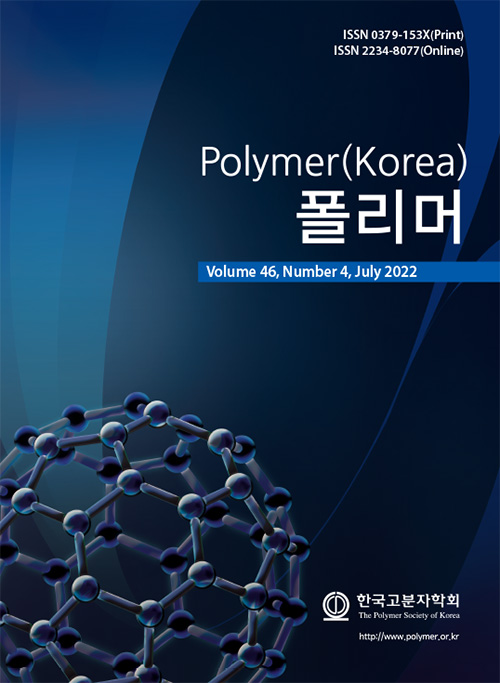- Deep Learning Model for Prediction of Entanglement Molecular Weight of Polymers
Department of Chemical and Biological Engineering, Korea University, Seoul 02841, Korea
- 고분자 엉킴 분자량 예측을 위한 심층 학습 모델 연구
고려대학교 화공생명공학과
Reproduction, stored in a retrieval system, or transmitted in any form of any part of this publication is permitted only by written permission from the Polymer Society of Korea.
Entanglement molecular weight is one of the key polymer properties strongly related to many mechanical and dynamic behaviors of polymers. Despite its importance, the data for entanglement molecular weight by either measurements or predictions are still far from covering a wide range of polymer species. To address this issue, we employed the deep learning technique to predict the entanglement molecular weight of polymers using graph convolutional neural networks that convert molecules into graph structures. In addition, to overcome the limitation due to the lack of data, the transfer learning technique, which transfers knowledge learned through large-scale datasets, was also introduced to improve the performance. The trained neural network model showed higher prediction performance than the conventional prediction methods.
엉킴 분자량은 고분자 사슬의 엉킴에 관한 성질로 고분자의 기계적 물성 및 동적 성질에 관련된 중요성에도 불구하고 광범위한 고분자 종에 따른 측정 데이터가 많이 부족한 실정이다. 본 연구에서는 이러한 문제점을 극복하기 위하여 심층 학습 기법을 활용하여 엉킴 분자량을 예측하고자 하였으며, 분자를 그래프 구조로 변환하여 다루는 그래프 합성곱 신경망을 이용하여 엉킴 분자량을 성공적으로 학습 및 예측하였다. 또한 데이터 수 부족으로 인한 성능의 한계점을 극복하기 위하여, 대용량 데이터를 통해 학습한 지식을 재활용하는 전이 학습 기법을 도입하여 높은 예측 성능 개선을 이루었다. 학습된 인공신경망 모델은 기존 예측 기법보다 높은 예측 성능을 보였다. 본 연구에서 사용된 기계학습 기법은 고분자 역설계 및 물성 예측 기법에 많은 도움을 줄 수 있을 것으로 기대된다.
Keywords: entanglement molecular weight, machine learning, transfer learning, graph convolutional neural network, quantitative structure property relationship.
- Polymer(Korea) 폴리머
- Frequency : Bimonthly(odd)
ISSN 0379-153X(Print)
ISSN 2234-8077(Online)
Abbr. Polym. Korea - 2023 Impact Factor : 0.4
- Indexed in SCIE
 This Article
This Article
-
2022; 46(4): 515-522
Published online Jul 25, 2022
- 10.7317/pk.2022.46.4.515
- Received on Apr 7, 2022
- Revised on May 12, 2022
- Accepted on May 13, 2022
 Correspondence to
Correspondence to
- Joona Bang , and June Huh
-
Department of Chemical and Biological Engineering, Korea University, Seoul 02841, Korea
- E-mail: joona@korea.ac.kr, junehuh@korea.ac.kr










 Copyright(c) The Polymer Society of Korea. All right reserved.
Copyright(c) The Polymer Society of Korea. All right reserved.